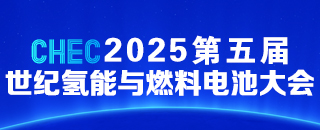中国石化新闻网讯 据油气新闻网1月12日报道,根据欧洲专利局(EPO)和国际能源署(IEA)对专利的联合研究,氢技术的发展正在转向电解等低排放解决方案。
该报告是第一份此类报告,使用全球专利数据对所有氢技术的创新进行全面的最新分析。其涵盖了从氢供应到存储、分配和转化,以及最终用途应用的所有技术。
国际能源署执行主任法提赫·比罗尔表示,低排放源的氢气可以在清洁能源转型中发挥重要作用,有可能在诸如长途运输和化肥生产等清洁替代品很少的行业替代化石燃料。这项研究表明,创新者正在响应竞争性氢供应链的需求,而且确定了需要付出更多努力的领域,特别是终端用户。我们将继续帮助各国政府推动安全、有弹性和可持续的清洁能源技术的创新。
EPO总裁António Campinos表示,利用氢的潜力是欧洲到2050年实现气候中和战略的关键部分。但是,如果氢要在减少二氧化碳排放方面发挥重要作用,就迫切需要在一系列技术上进行创新。该报告揭示了各国和行业部门之间一些令人鼓舞的转型模式,包括欧洲对新氢技术的出现作出的主要贡献。其还强调了初创企业对氢创新的贡献,以及他们依赖专利将发明推向市场。
该研究介绍了2011年至2020年氢技术的主要趋势,以国际专利家族(IPF)衡量的话,其中每一个都代表了一项高价值的发明,其专利申请已在全球两个或多个专利局提交。该报告发现,全球氢专利由欧盟和日本主导,这两个国家在过去十年中申请的IPF显著增长,分别占28%和24%。欧洲主要国家是德国(占全球总数的11%)、法国(6%)和荷兰(3%)。
拥有20%的氢相关专利的美国,是过去十年中唯一一个国际氢专利申请下降的主要创新中心。韩国和亚洲大国在氢技术方面的国际专利申请活动仍然平稳,但仍在上升。除这五个主要创新中心外,其他产生大量氢气专利的国家包括英国、瑞士和加拿大。
2011—2020年期间,制氢技术占氢专利数量最多。虽然目前全球制氢几乎完全基于化石燃料,但专利数据显示,低排放创新在氢价值链各个环节产生的国际专利数量是现有技术的两倍多。
2020年,受气候问题推动的技术占所有与氢生产相关的专利的近80%,其增长主要由电解创新的大幅增加推动。最具创新性的地区现在正在竞相举办第一个工业推广阶段,根据数据表明,欧洲正在成为投资新电解槽制造能力的地区。
在氢的许多潜在最终用途中,汽车行业长期以来一直是创新的重点,该领域的专利申请持续增长,主要由日本主导。尽管近年来政策和媒体一致关注氢在长途运输、航空、发电和供暖方面的脱碳潜力,但在其他最终用途应用中还没有看到类似的势头。
如果不解决这些部门化石燃料使用不减的问题,就无法实现国家净零排放承诺。一个亮点是最近使用氢来脱碳钢铁生产的专利申请有所增加——这可能是对《巴黎协定》后共识的回应,即该行业需要快速减排的根本解决方案。
对于成熟的氢技术,创新主要由欧洲化工产业主导,该行业的专业知识也使其在电解和燃料电池等气候驱动技术方面处于领先地位。
汽车公司也很活跃,不仅仅是汽车技术。在这些专利背后,2011—2020年,大学和公共研究机构创造了13.5%的与氢相关的国际专利,由法国和韩国机构主导,重点是电解等低排放氢生产方法。
该研究发现,2011—2020年对氢能公司的100亿美元风险投资中,有一半以上流向了拥有专利的初创企业,尽管他们在报告的数据集的初创企业中所占比例不到三分之一。持有专利是一个初创企业能否继续吸引资金的良好指标:2011—2020年,超过80%的氢初创企业后期投资都流向了已经在电解、燃料电池或从天然气中生产氢的低排放方法等领域提交专利申请的公司。
郝芬 译自 油气新闻网
原文如下:
Hydrogen advances shifting towards clean energy:IEA
Hydrogen technology development is shifting towards low-emissions solutions such as electrolysis, according to a joint study of patents by the European Patent Office (EPO) and the International Energy Agency (IEA).
The report is the first of its kind and uses global patent data to provide comprehensive up-to-date analysis of innovation in all hydrogen technologies. It covers the full range of technologies, from hydrogen supply to storage, distribution and transformation, as well as end-use applications.
“Hydrogen from low-emissions sources can play an important role in clean energy transitions with potential to replace fossil fuels in industries where few clean alternatives exist, like long-haul transport and fertilizer production,” said IEA Executive Director Fatih Birol.
“This study shows that innovators are responding to the need for competitive hydrogen supply chains, but also identifies areas – particularly among end-users – where more effort is required. We will continue to help governments spur innovation for secure, resilient and sustainable clean energy technologies.”
“Harnessing the potential of hydrogen is a key part of Europe’s strategy to achieve climate neutrality by 2050,” said EPO President António Campinos.
“But if hydrogen is to play a major role in reducing CO2 emissions, innovation is urgently needed across a range of technologies. This report reveals some encouraging transition patterns across countries and industry sectors, including Europe’s major contribution to the emergence of new hydrogen technologies. It also highlights the contribution of start-ups to hydrogen innovation, and their reliance on patents to bring their inventions to market.”
The study presents the major trends in hydrogen technologies from 2011 to 2020, measured in terms of international patent families (IPFs), each of which represents a high-value invention for which patent applications have been filed at two or more patent offices worldwide. The report finds that global patenting in hydrogen is led by the European Union and Japan, which account for 28% and 24% respectively of all IPFs filed in this period, with significant growth in the past decade. The leading countries in Europe are Germany (11% of the global total), France (6%), and the Netherlands (3%).
The US, with 20% of all hydrogen-related patents, is the only major innovation centre to see international hydrogen patent applications decline in the past decade. International patenting activity in hydrogen technologies remained modest in South Korea and the biggest country in Asia but is on the rise. In addition to these five main innovation centres, other countries generating significant volumes of hydrogen patents include the United Kingdom, Switzerland and Canada.
Hydrogen production technologies accounted for the largest number of hydrogen patents over the 2011-2020 period. While global hydrogen production is currently almost entirely fossil-based, the patenting data shows that low-emissions innovations generated more than twice the number of international patents across all segments of the hydrogen value chain than established technologies.
Technologies motivated by climate concerns accounted for nearly 80% of all patents related to hydrogen production in 2020, with growth driven chiefly by a sharp increase of innovation in electrolysis. The most innovative regions are now competing to host the first industrial roll-out phase, with the data suggesting that Europe is gaining an edge as a location for investment in new electrolyser manufacturing capacity.
Among hydrogen’s many potential end-use applications, the automotive sector has long been the focus for innovation, and patenting in this sector continues to grow, led mainly by Japan. Similar momentum is not yet visible in other end-use applications, despite concerted policy and media attention in recent years on hydrogen’s potential to decarbonise long-distance transport, aviation, power generation and heating.
National net zero emissions pledges cannot be achieved without addressing unabated fossil fuel use in these sectors. One bright spot is a recent uptick in patenting for the use of hydrogen to decarbonise steel production – possibly in response to the post-Paris Agreement consensus that the sector needs radical solutions to cut emissions quickly.
For established hydrogen technologies, innovation is dominated by the European chemical industry, whose expertise in this sector has also given it a head start in climate-motivated technologies such as electrolysis and fuel cells.
Automotive companies are also active, and not just for vehicle technology. Behind them, universities and public research institutes generated 13.5% of all hydrogen-related international patents in 2011-2020, led by French and Korean institutions, with a focus on low-emissions hydrogen production methods such as electrolysis.
The study finds that more than half of the $10 billion of venture capital investment into hydrogen firms in 2011-2020 went to start-ups with patents, despite them making up less than a third of the start-ups in the report’s data set. Holding a patent is a good indicator of whether a start-up will keep attracting finance: more than 80% of late-stage investment in hydrogen start-ups in 2011-2020 went to companies that had already filed a patent application in areas such as electrolysis, fuel cells, or low-emissions methods for producing hydrogen from gas.
 微信客服
微信客服 微信公众号
微信公众号





0 条